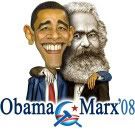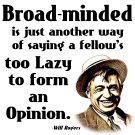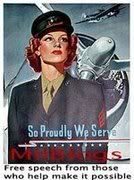Sir Winston S. Churchill in his Nobel Prize winning "Memoirs of the Second World War" touches briefly on one of the most colourful people of the interbellum. Without context or further identification - we'll fill that in later - he mentions meeting one Putzi Hanfstaengl during the summer of 1932 while on a research trip for the purposes of his book "Life of Marlborough".
 "At the Regina Hotel a gentleman introduced himself (...) and spoke a great deal about "the Fueher", with whom he appeared to be intimate. As he seemed to be a talkative fellow, speaking excellent English, I asked him to dine. (...) After dinner he went to the piano and played and sang many tunes and songs in such a remarkable style (...) He was a great entertainer (...) He said I ought to meet him (the Fuehrer), and that nothing would be easier to arrange. Herr Hitler came every day to the hotel about five o'clock, and would be very glad to see me."
"At the Regina Hotel a gentleman introduced himself (...) and spoke a great deal about "the Fueher", with whom he appeared to be intimate. As he seemed to be a talkative fellow, speaking excellent English, I asked him to dine. (...) After dinner he went to the piano and played and sang many tunes and songs in such a remarkable style (...) He was a great entertainer (...) He said I ought to meet him (the Fuehrer), and that nothing would be easier to arrange. Herr Hitler came every day to the hotel about five o'clock, and would be very glad to see me."
Churchill is giving an account of his considerations, in the process giving us a lesson in patriotism, chivalry, and realism. It just goes to show how 'politically correct' we've all become! We'll come back to the subject later in the post.
"I had no national prejudices against Hitler at the time. I knew little of his doctrine or record and nothing of his character. I admire men who stand up for their country in defeat, even though I am on the other side. He had a perfect right to be a patriotic German if he chose. I always wanted England, Germany and France to be friends."
Then Churchill happened to pass a few adverse remarks, questioning Herr Hitler's "so violent views about the Jews," and the arrangement was stopped short from the German side. "This was the last I saw of 'Putzi' (...) Thus Hitler lost the only chance of seeing me."
 Putzi Hanfstaengl resurfaces in another literary master piece. The joy of one of the best books I have come across in years could easily have been spoiled by the politically correct activities of the Dutch publishers who, for reasons best known to themselves, are marketing the book to an audience of multicultis, describing the protagonist as pleading for 'the multicultural society' and 'diversity'. This is a ludicrous notion in the context of the interbellum. Perhaps such a philistine approach to marketing has occurred in other countries as well. The English language 2006 Random House Trade Edition I know for a fact to have escaped the addition of 'narrarives'.
Putzi Hanfstaengl resurfaces in another literary master piece. The joy of one of the best books I have come across in years could easily have been spoiled by the politically correct activities of the Dutch publishers who, for reasons best known to themselves, are marketing the book to an audience of multicultis, describing the protagonist as pleading for 'the multicultural society' and 'diversity'. This is a ludicrous notion in the context of the interbellum. Perhaps such a philistine approach to marketing has occurred in other countries as well. The English language 2006 Random House Trade Edition I know for a fact to have escaped the addition of 'narrarives'.
"The Orientalist" by Tom Reiss is not a piece of cheap propaganda for activists to exploit for their own purposes. It is a thoroughly and uniquely researched work that accounts hitherto less known historical and personal facts. It is well written, and chronicles a fascinating and remarkable story, encompassing four empires, three continents, three religions, two revolutions and two world wars. I have already written about it on earlier occasions, in "History Class: of agit-prop, revolution and terror!".
An episode during the early period of the advancing Nazi party, touches the surreal and the absurd in a truly hilarious manner. Reiss describes Putzi - "little squirt" in Bavarian dialect - as Hitler's Harvard educated Press Secretary, creative cheerleader and organiser of Hitler's Flying Circus ......
"the fastest political tour in history, using trains, planes and automobiles to shuttle the führer around the country (...) a three-engine Lufthansa D 2001 and three long, black Mercedes saloons (...) raced together across Germany, with Hitler in the lead car, the top down, a leather flight helmet keeping his hair in place. (...) Hitler thrived on the crazy hours and the speed of it all. It was a political blitzkrieg. But the real how was in the air, when the candidate would descend on German cities (...). The sympathetic German papers took to calling these the Freedom Flights, and they contributed mightily to the growing myth of Hitler as Germany's 'dashing' savior - its redeeming angel from the skies, descending on all parts if the fatherland. (...)."
 Churchill must have caught Hanfstaegnl in 1932 during one of the Flying Circus' political road tours. Unbeknownst to Churchill the entertainer's full name was Ernst Sedgwick Hanfstaengl, "mother a Sedgwick from the old New England family. (Two of his grandfathers had been Civil War generals; one of them, a German immigrant 48er, was a pallbearer at Abraham Lincoln's funeral.) (...) His father was one of the most prominent men in Munich in the late nineteenth century, and the Hanfstaengls had visitors such as Mark Twain, Richard Strauss, and Fridtjof Nanson, the famous arctic explorer and passport inventor, to their lavish villa. How on earth had this white-shoe boy gotten involved with a bunch of lower class, anti-Semite beer-hall politicians?"
Churchill must have caught Hanfstaegnl in 1932 during one of the Flying Circus' political road tours. Unbeknownst to Churchill the entertainer's full name was Ernst Sedgwick Hanfstaengl, "mother a Sedgwick from the old New England family. (Two of his grandfathers had been Civil War generals; one of them, a German immigrant 48er, was a pallbearer at Abraham Lincoln's funeral.) (...) His father was one of the most prominent men in Munich in the late nineteenth century, and the Hanfstaengls had visitors such as Mark Twain, Richard Strauss, and Fridtjof Nanson, the famous arctic explorer and passport inventor, to their lavish villa. How on earth had this white-shoe boy gotten involved with a bunch of lower class, anti-Semite beer-hall politicians?"
"Putzi was the Nazi movement's only Harvard man. Though a figure of fun among the hard-core Nazis - Putzi played 'Sam' to Hitler's Bogart, entertaining him at the end of the day with his piano playing - he was instrumental in making Nazism salonfähig (...) Hitler used Hanfstaengl's affable nature and white-shoe pedigree to forge many of his important links to German and American rich people (...) Putzi was the connection to old American, British and German families."
In 1922 Putzi talks to a young American military attaché in Germany, Captain Truman-Smith, because "all the revolutionary nonsense down in Bavaria had the embassy concerned". "Putzi wrote in his 1957 memoir 'Unheard Witness' how Truman-Smith provides him with a Press ticket to a meeting with "the most remarkable fellow I've ever come across", Adolf Hitler. Truman-Smith requests him to have a look and report back. He heard Hitler speak at the Kindlkeller about Kemal Ataturk and the example of Mussolini, and ... joined the movement."
An inventive cheerleader for the Harvard football team, Putzi transferred that position to Hitler's Nazi entourage. (...) According to Putzi's memoir, he and Hitler were together at the house of the Nazi's semiofficial photographer, Heinrich Hoffmann, in Munich at the time:
 I started playing some of the football marches I had picked up at Harvard. I explained to Hitler all the business about cheerleaders and marches, counter-marches and deliberate whipping up of hysterical enthusiasm. I told him about the thousands of spectators being made to roar Harvard, Harvard, Harvard, rah, rah, rah!" in unison and of the hypnotic effect of this sort of thing. I played him some of the Sousa marches and then my own Falarah [Putzi's contribution to the Harvard cheerleading repertoire], to show how it could be done by adapting German tunes, and gave them all that boyant beat so characteristic of American brass-band music. I had Hitler fairly shouting with enthusiasm. "That is it, Hanfstaengl, that is what we need for the movement, marvelous, and he pranced up and down the room like a drum majorette.
I started playing some of the football marches I had picked up at Harvard. I explained to Hitler all the business about cheerleaders and marches, counter-marches and deliberate whipping up of hysterical enthusiasm. I told him about the thousands of spectators being made to roar Harvard, Harvard, Harvard, rah, rah, rah!" in unison and of the hypnotic effect of this sort of thing. I played him some of the Sousa marches and then my own Falarah [Putzi's contribution to the Harvard cheerleading repertoire], to show how it could be done by adapting German tunes, and gave them all that boyant beat so characteristic of American brass-band music. I had Hitler fairly shouting with enthusiasm. "That is it, Hanfstaengl, that is what we need for the movement, marvelous, and he pranced up and down the room like a drum majorette.
After that he had the SA band practicing the same thing. I even wrote a dozen marches or so myself over the course of the years, including the one that was played by the brown-shirt columns as they marched through the Brandenburger Tor on the day he took over power (...) that is the origin of it and I suppose I must take my share of the blame."

That summer (of 1932) saw daily gun battles between Nazis and Communists on the streets of Berlin. Christopher Isherwood, living in Berlin at the time, thought there was something false and ritualistic about the street fighting, as though both parties were in it mainly for publicity purposes."
(...) There was no doubt that both sides (...) had an interest in breaking down public order and scaring everyone away from the center parties (...) a second round of national elections proved the extremists' violence making strategies effective: both Nazis and Communists gained at the expense of moderate parties (...)." After the elections of November 1932 "even the pretense of fighting between the Nazis and Communists was dropped. It was time to deliver the coup de grâce to the bourgeois center - the German democracy (...) Communists and Nazis stood arm in arm, one shouting 'Red Front,' the other 'Heil Hitler!" (...) rows of low-rent housing hung with alternating rows of fluttering swastika and hammer-and-sickle flags."
We forget the methods and purposes of terrorism and violence at our peril.
Here's the news from Athens a few weekens ago.
- More excerpts from
"The Orientalist" by
Tom Reiss on the history of the two Socialist movements in future postings.









 - Caption:
- Caption: 

 - Caption: Wallenstein Palace in a remarkable
- Caption: Wallenstein Palace in a remarkable 










